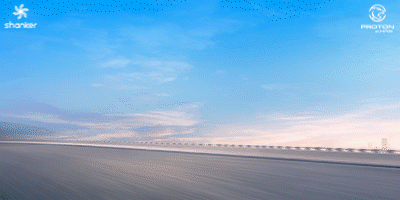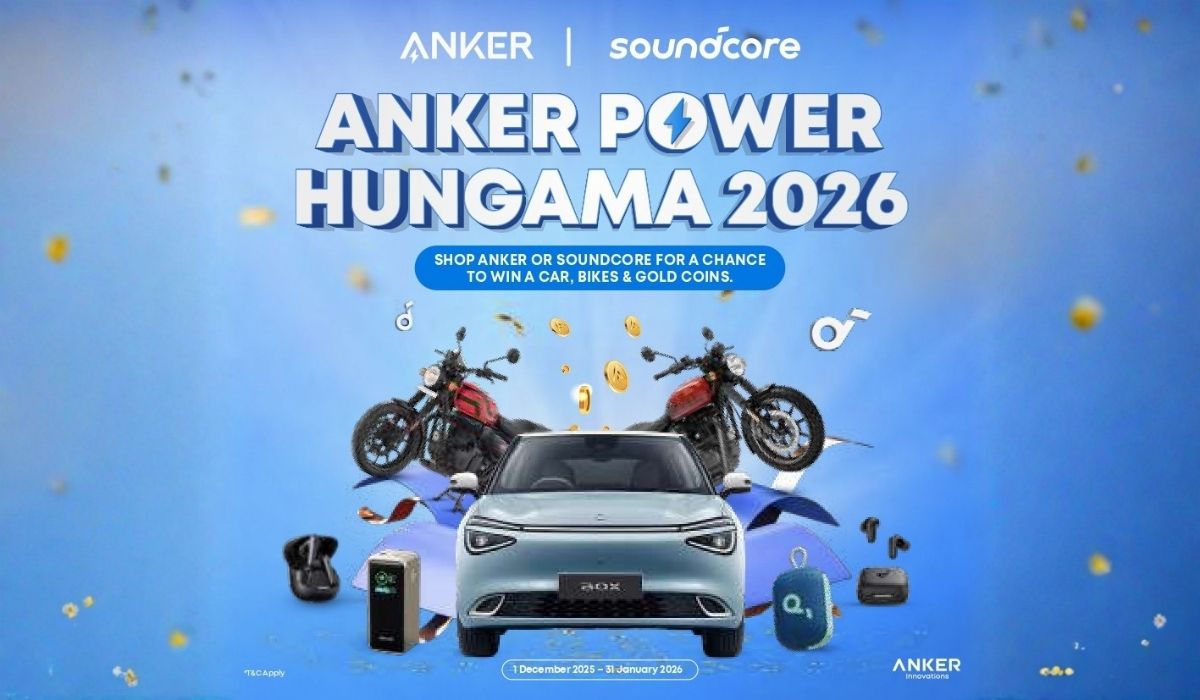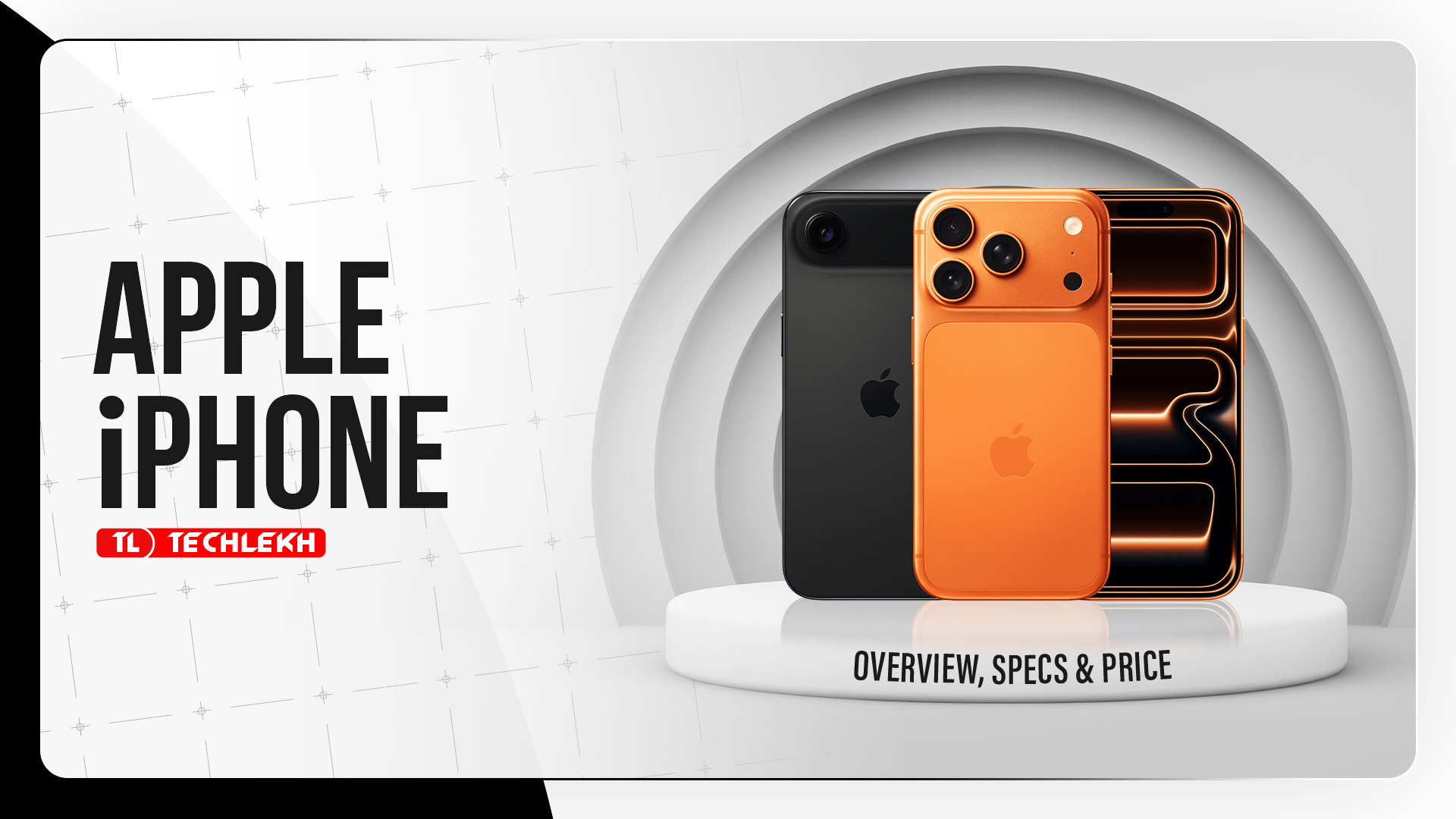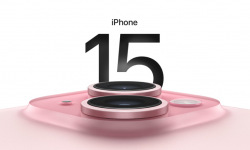Pros
- IP53 certification
- Good cameras
- Good performance
- FHD OLED panel
Cons
- Macro camera is useless
- Battery could have been better
Redmi Note 10 is the least expensive offering from Xiaomi’s new Note 10 series.
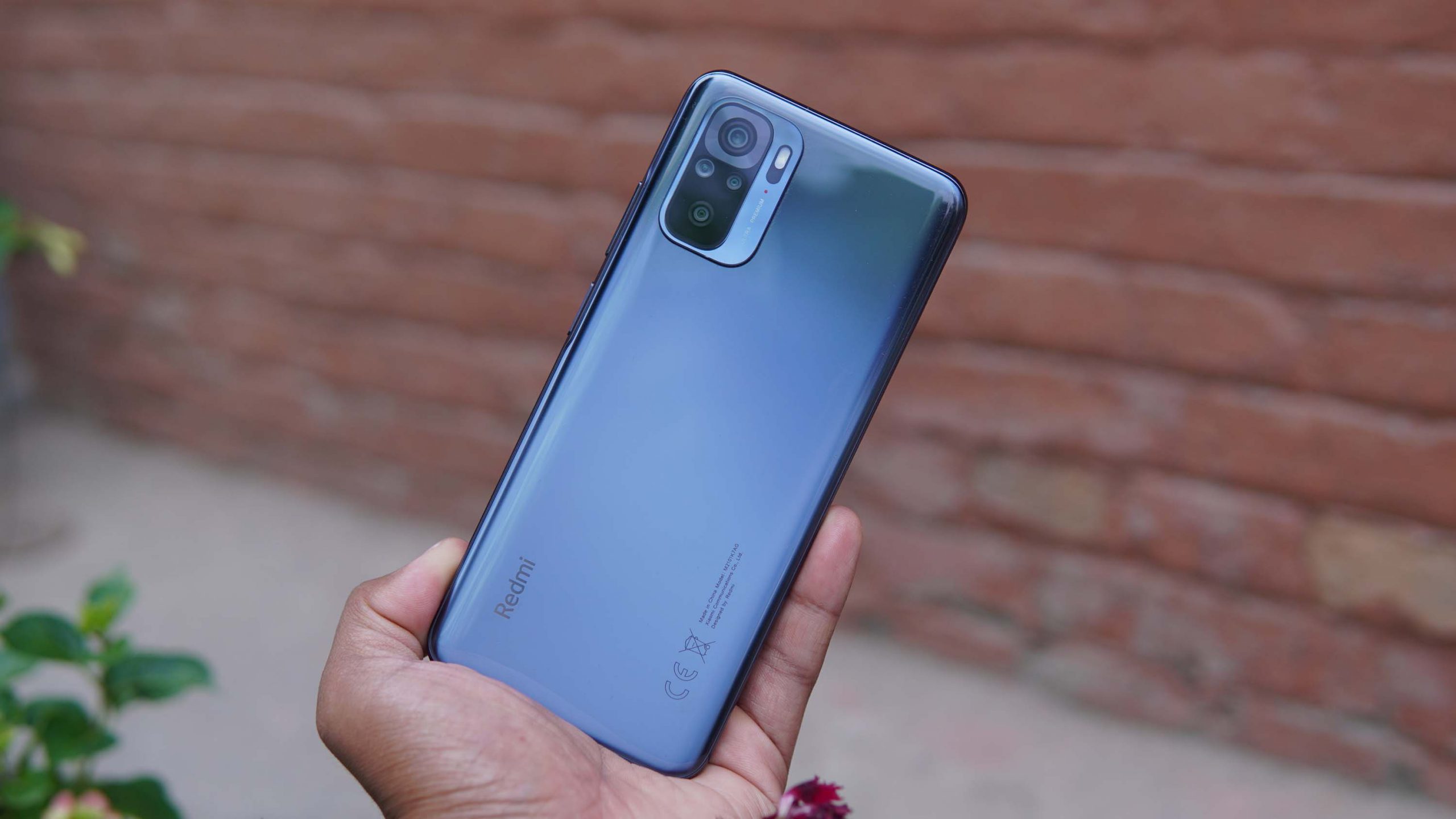
RedmiNote 10 price in Nepal starts at Rs. 21,999 and it comes with a Super AMOLED panel and a new Snapdragon 678 chipset.
The spec on paper is top of the line but how’s the real-world experience? I’ll let you know all about it in this review of the Redmi Note 10.
Redmi Note 10 Specifications
- Body: 160.46 x 74.5 x 8.3 mm, 178.8g, Dual SIM (Nano-SIM, dual stand-by)
- Display: 6.43 inches FHD+ Super AMOLED, 2480 x 1080 pixels, Gorilla Glass 3
- Chipset: Qualcomm SDM678 Snapdragon 678 (11 nm)
- CPU: Octa-core (2×2.2 GHz Kryo 460 Gold & 6×1.7 GHz Kryo 460 Silver)
- GPU: Adreno 612
- Memory: 64GB 4GB RAM, 128GB 4GB RAM, 128GB 6GB RAM, UFS 2.2
- OS: Android 11, MIUI 12
- Rear Camera: 48 MP, Sony IMX582, 1/2″, 0.8μm, f/1.79
- 8 MP, IMX355, 1/4″, 1.12μm, f/2.2
- 2 MP, f/2.4, (macro)
- 2 MP, f/2.4, (depth)
- Video: 4K@30fps, 1080p@30/60fps
- Front Camera: 13MP, OV13B10, 1/3.06″
- Video: 1080p@30fps, 720p@30fps
- Battery: Non-removable Li-Po 5000 mAh Battery, Fast charging 33W
- USB: USB Type-C 2.0, USB On-The-Go
- Misc: Fingerprint (side-mounted), accelerometer, gyro, proximity, compass
- Colors: Aqua Green, Shadow Black, Frost White
Redmi Note 10 Price in Nepal: Rs. 21,999 (4/64GB) / Rs. 22,999 (4/128GB) / Rs. 24,999 (6/128GB)
Xiaomi Redmi Note 10 Review
Fabulous Display
- 6.43 inches FHD+ Super AMOLED
- 2480 x 1080 pixels
- Gorilla Glass 3
The display is the most prominent and exciting upgrade on the Redmi Note 10 compared to its predecessors. While it doesn’t get a high refresh rate panel like the Pro model, it brings a Super AMOLED panel for just 21k.
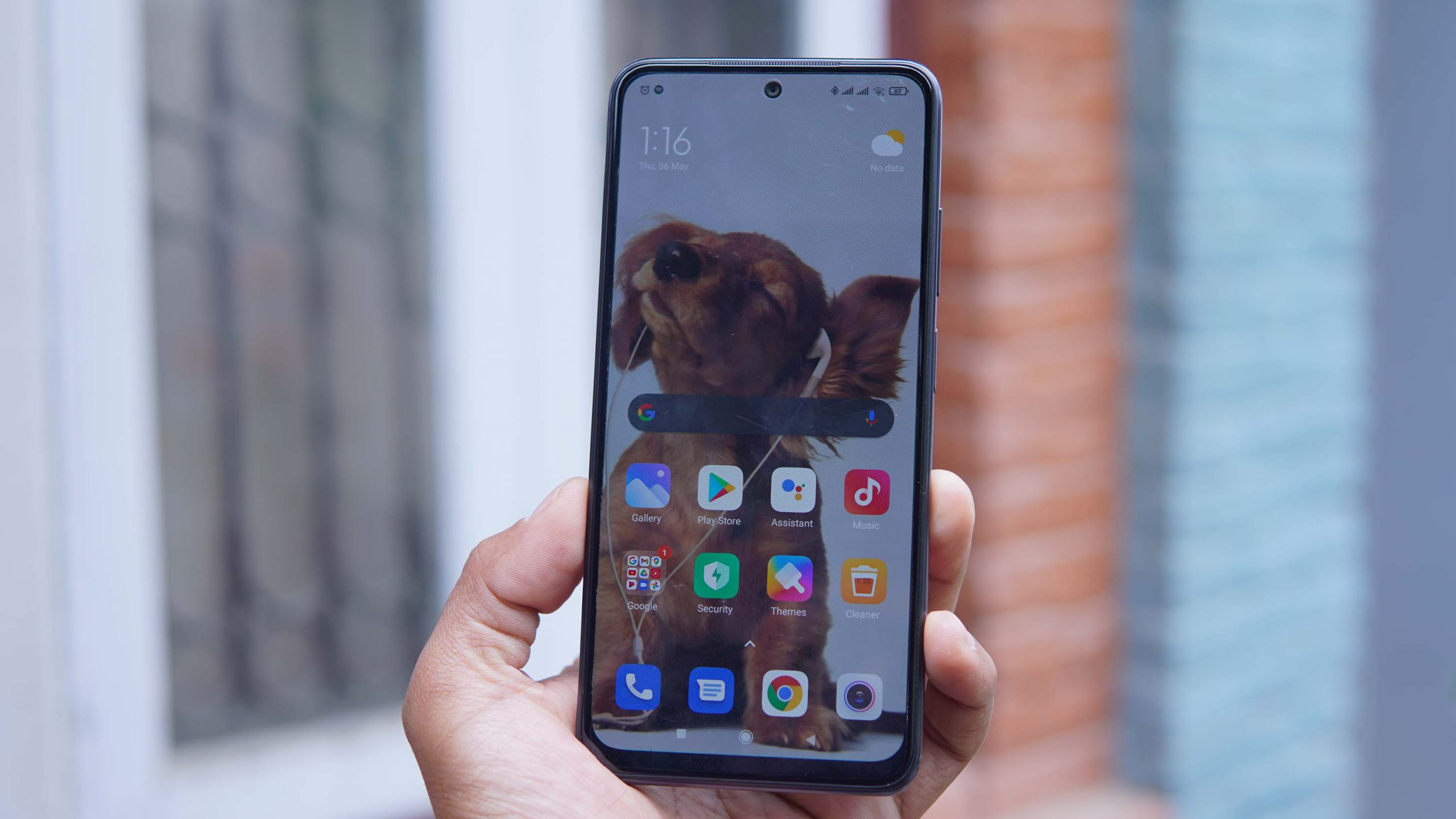
The 6.43-inch Super AMOLED panel is claimed to reach 700 nits and it definitely feels so. The display is more than bright enough indoors and it is more than fine for outdoor usage.
LATEST: POCO X3 Pro with Snapdragon 860 to Launch Soon in Nepal
It’s one of the best displays for a budget phone that offers vivid colors and excellent viewing angles. You can choose 3 display modes: Auto, Saturated, and Standard. Among these, standard more provides the best accuracy.
Upgraded Performance
- Qualcomm SDM678 Snapdragon 678 (11 nm)
- Octa-core (2×2.2 GHz Kryo 460 Gold & 6×1.7 GHz Kryo 460 Silver) CPU
- Adreno 612 GPU
- 64GB 4GB RAM, 128GB 4GB RAM, 128GB 6GB RAM, UFS 2.2
Redmi Note 10 is powered by the Snapdragon 678 chipset which is an upgrade of the Snapdragon 675.
Both chipsets share the same CPU, GPU, ISP, modem, and 11nm manufacturing process. The only differentiating factor is that the 678 is clocked slightly higher.
Note 10 performs marginally better than its predecessor and it shows in real-world usage. UI navigation, app opening, and multi-tasking feel smooth on the Redmi Note 10. Though it is not a performance beast, it is pretty good at gaming as well.
LATEST: Redmi Note 10 Pro with 120Hz Display & SD 732G to Launch Soon in Nepal
I tested both PUBG Mobile and COD Mobile. PUBG Mobile runs fairly smooth on smooth graphics and ultra frame rate setting. With a consistent frame rate between 38 and 40fps, I enjoyed the gameplay on Note 10. Similarly, COD Mobile enjoys a stable frame rate of 58-60fps on low graphics and max fps setting with occasional drops to 55fps.
Sleek Design
- 160.46 x 74.5 x 8.3 mm
- 178.8g
- Dual SIM (Nano-SIM, dual stand-by)
Like the Note 10 Pro and Pro Max, Redmi Note 10 boasts an IP53 certification against dust and water. This will ensure protection against splashes and rain.
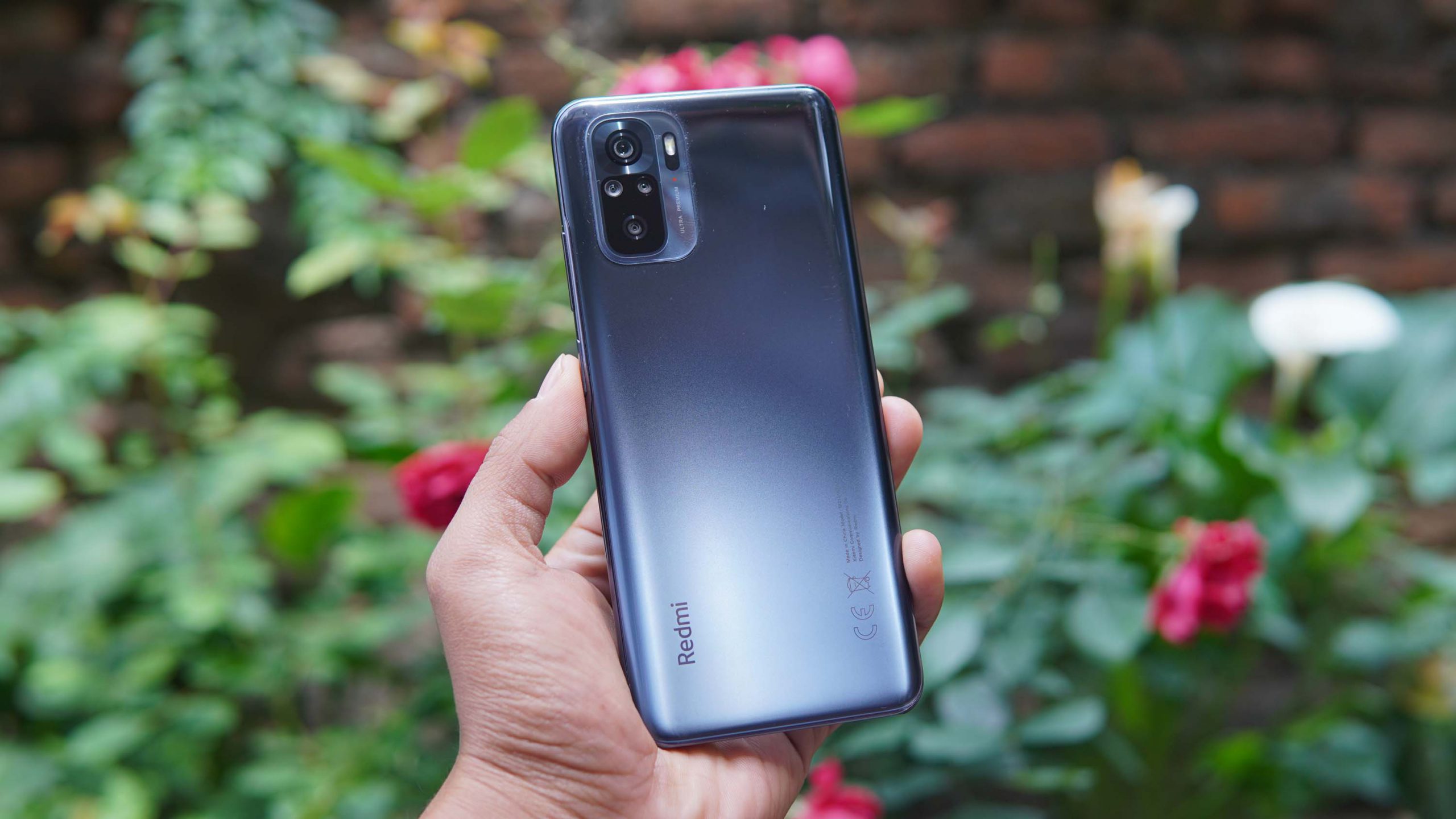
Again, it gets Gorilla Glass 3 on the front and the back is made up of plastic along with the frame. But, the phone feels pretty good in the hand as it is light (178g) and thin (8.3mm). However, the Onyx Gray color we received is a fingerprint magnet and you can easily see the smudges.
The camera module is big and asymmetrical but I don’t have a problem with it. On the front, the side bezels are quite thin and the punch-hole in the middle is minimal.
The fingerprint sensor embedded in the power button has ideal placement and it works fast as it should. It did not have many misreadings during the review period.
The bottom and top end of the phone has a matte finish which gives it a distinct look. There’s the usual 3.5mm jack, UBS-C port, and speaker on the bottom. On the top, there’s an IR blaster along with the secondary loudspeaker.
Camera
- Rear Camera: 48 MP, Sony IMX582, 1/2″, 0.8μm, f/1.79
- 8 MP, IMX355, 1/4″, 1.12μm, f/2.2
- 2 MP, f/2.4, (macro)
- 2 MP, f/2.4, (depth)
- Video: 4K@30fps, 1080p@30/60fps
- Front Camera: 13MP, OV13B10, 1/3.06″
- Video: 1080p@30fps, 720p@30fps
Unlike the Pro variants, Redmi Note 10 still gets a 48MP sensor. Tagging along with a 48MP sensor is an 8MP Ultra wide-angle sensor, a 2MP macro sensor, and a 2MP depth sensor.
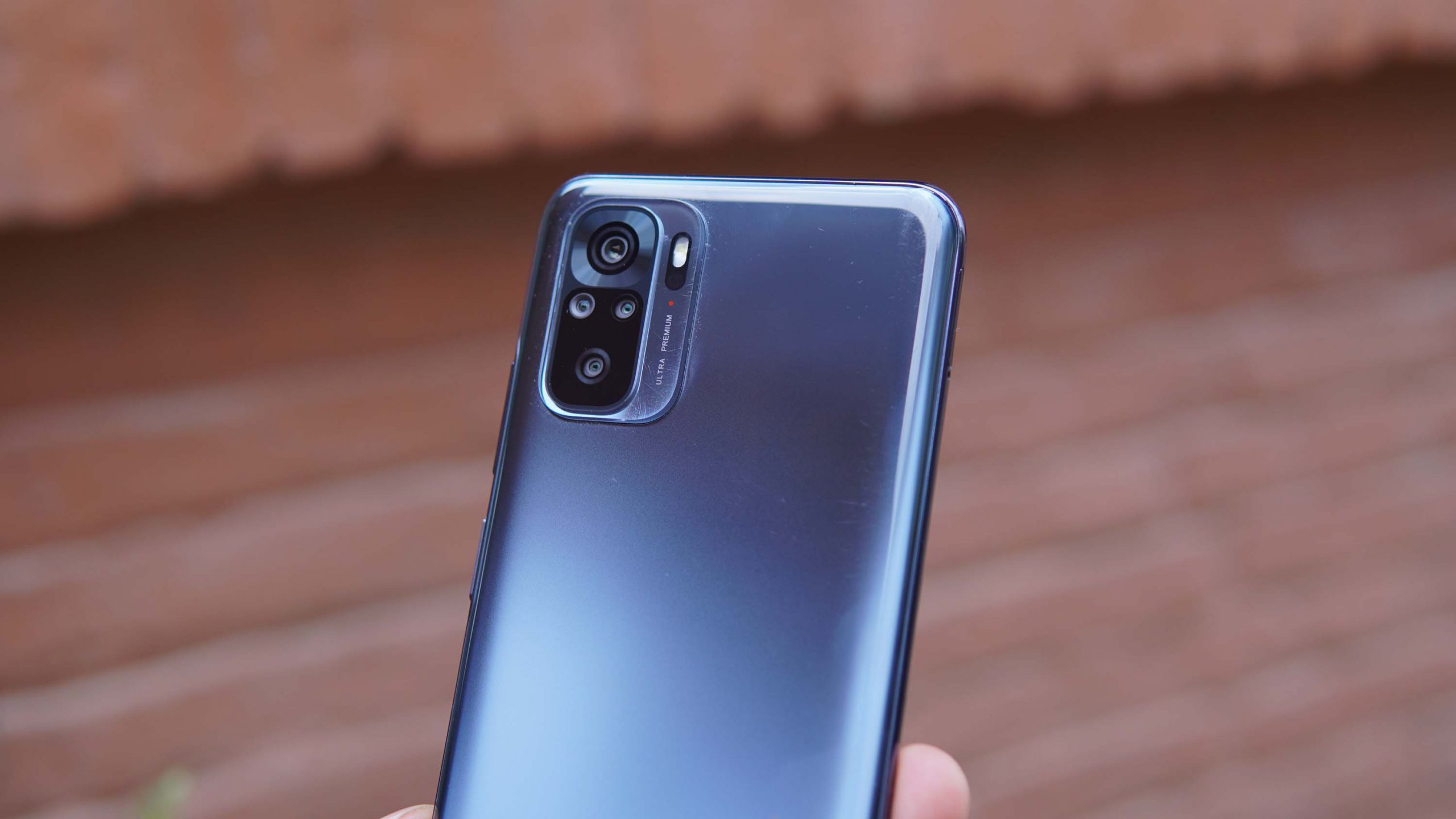
NORMAL PHOTOS
The 12MP daylight samples from the main camera are very sharp and well detailed. You can notice good detail on buildings and foliages. However, the same cannot be said for indoor images.
The dynamic range is really impressive on the Note 10 but some images can turn out a bit soft. Colors reproduction also leans towards a neutral profile with slightly boosted colors.
As it is most of the time, 48MP mode looks softer, noisier, and you won’t get HDR as well. So, you should use 12MP all the time.
LOW LIGHT AND NIGHT MODE
As with most phones, the low light images take a dip in quality, but the HDR-enabled low light photos look pretty good. The white balance seems to be balanced with nice contrast and colors.
The included Night Mode also helps to introduce much more detail into the scene. But the noise suppression usually makes the image look like an oil painting. The buildings and some details look matte painted.
ULTRAWIDE PHOTOS
The ultrawide angle photos look softer than the main camera but it is to be expected given its 8MP sensor. However, it has got a good dynamic range and the distortion correction is done pretty well.
Furthermore, the ultrawide images have similar color production as the main cameras.
PORTRAIT AND MACRO MODE
Redmi Note 10 has pretty good portrait photography. Edge detection is really good but the cutout seems a bit aggressive sometimes. The background blur looks nice and the level of detail is also fine. However, it does bring in some extra face beautification.
On to the macro photos, the 2MP sensor doesn’t provide good detail. The photos lack sharpness and the exposure is not on point. They could have just skipped the macro sensor on this phone.
FRONT CAMERA
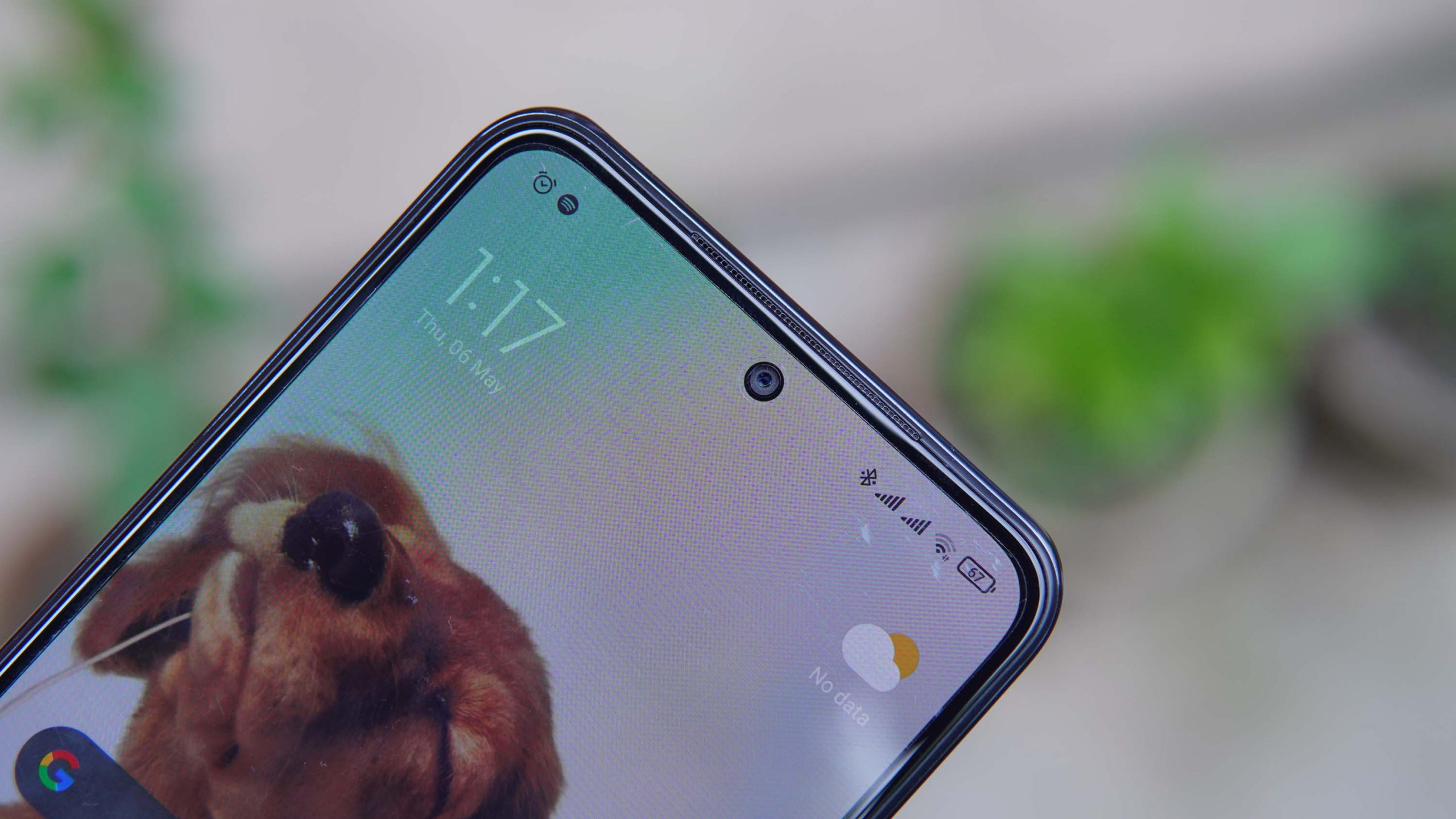
Selfies from the front camera are pretty good. The face is well-exposed with good details. The HDR also works well to keep the background highlight under control. The portrait mode is decent but it isn’t as good as the main camera.
Video
The phone is able to record at 4K 30fps and with EIS at 1080p 30fps. It can also record 60fps videos at FHD.
4K footages look really clean with decent dynamic range and noise suppression. The contrast looks good and the exposure is also quite good. As for 1080p videos, it doesn’t have fine detail but the overall video quality is quite good for the price.
Battery and Charging
- Non-removable Li-Po 5000 mAh battery
- Fast Charging 33W
- USB Type-C 2.0
Though it has a 5000mAh battery, the battery life on the Redmi Note 10 felt a bit short of what I expected. It can give you a day of usage but you will need to charge it at the end of the day.
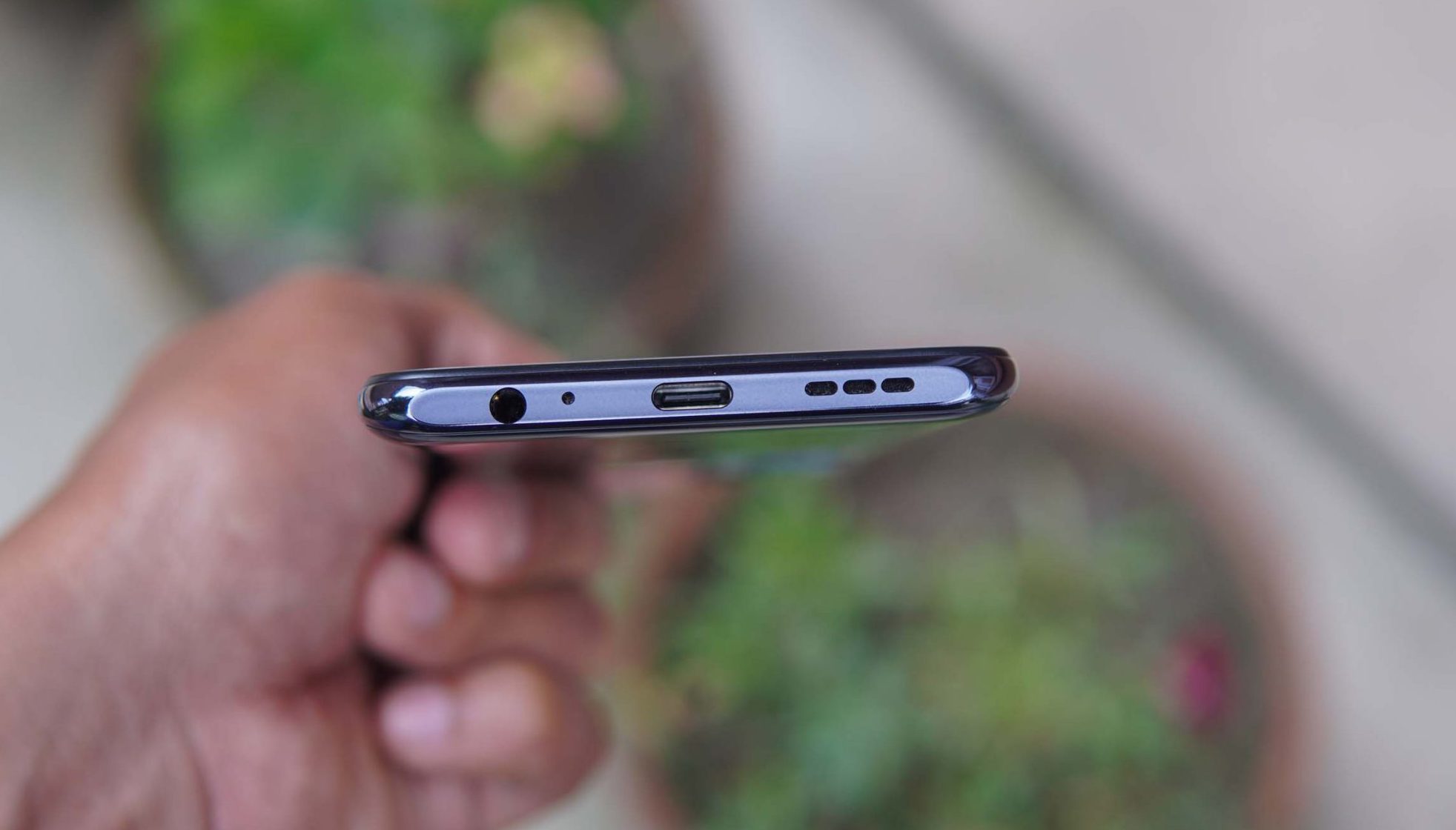
With moderate usage, I was getting around 5 hours of screen on time. As for charging, it can go from 0 to 65 in just 30 mins and a full charge takes slightly above 75 mins.
Speaker
Redmi Note 10 gets a pair of nice-sounding stereo speakers. It gets very loud which leads to noticeable distortion of the vocals. And, the bass is also not that prevalent. But, a stereo speaker at this price is a great deal.
Software
- Android 11
- MIUI 12
Redmi Note 10 runs on the latest Android 11 with MIUI 12. MIUI 12.5 should come pretty soon for the Note 10.
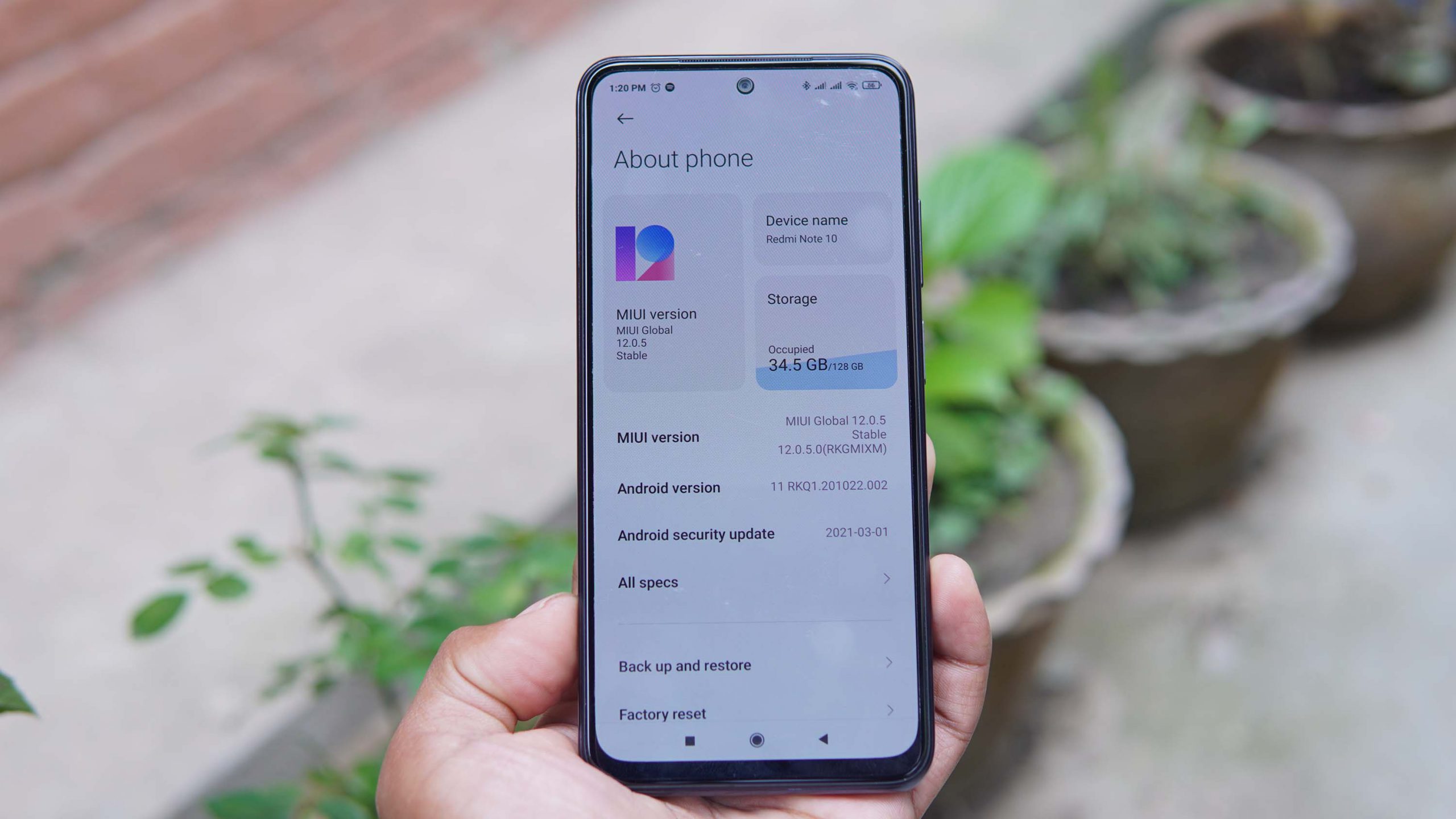
One of the biggest revamp on the MIUI 12 is the control center. It was not enabled by default and is available to choose from the settings menu. The new control center separates the quick toggles and the notification shade. Swiping down from the left brings up notifications whereas swiping from the right brings out quick toggles and a brightness slider.
It gets the POCO style app drawer as well with customizable background transparency and scroll bar. Plenty of display-related features are provided as well. There’s sunlight mode for an extra boost in brightness when not in Auto mode. Then, there’s the Always-On display which lets you customize with different themes, signatures, and clock syles.
Should You Buy Redmi Note 10?
Redmi Note is definitely a no-brainer as it gives you an FHD OLED panel, compact and lightweight design, good camera, good performance, and decent battery life.
READ NEXT: Motorola Moto E7 Power Review: Best Software Experience on Budget
MIUI 12 also offers a good user experience with more or less polished UI. Sadly, it is now missing AF on the macro sensor, reverse wired charging, and Gorilla Glass 5 compared to the predecessor.
Nonetheless, it is still the best value phone for the price and the best phone under Rs. 25,000.
I hope you like our Redmi Note 10 review. If you have any questions regarding this device, then drop them in the comments below.
-
Anker Power Hungama 2026: Buy Anker Products, Win Gifts Worth up to Rs. 40 Lakhs!HIGHLIGHTS Anker Nepal launches “Anker Power Hungama 2026” campaign with gifts worth up to Rs.…
-
Apple iPhone Price in Nepal (December 2025 Updated)This is the complete list of Apple iPhone price in Nepal for 2025. In this…
-
New Price Alert: iPhone 15 Sees a Rs. 5,000 Cut in NepalHIGHLIGHTS Apple iPhone 15 price in Nepal starts from Rs. 1,07,799 (128GB). It is powered…


